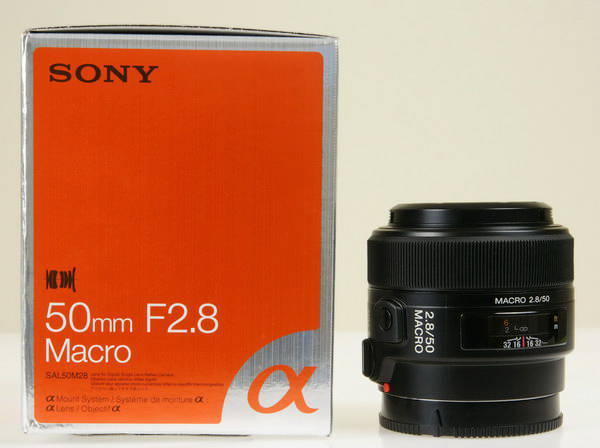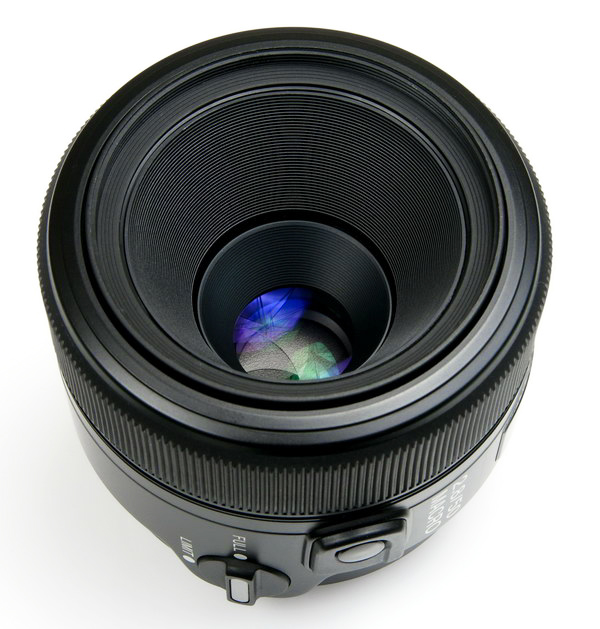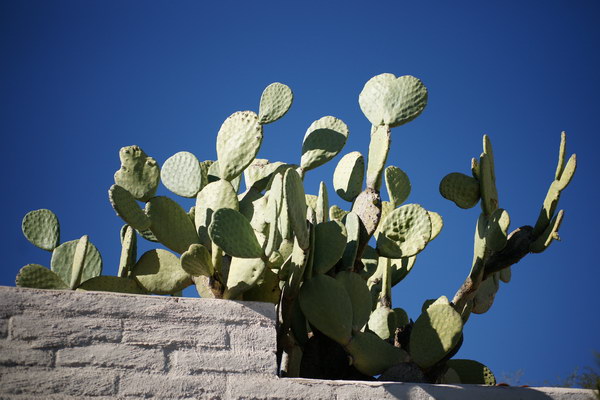.
|
Lens
|
|
|
Box contents
|
Front and rear caps, and a users manual.
|
|
Cost
|
$624 retail
|
|
Build quality
|
Very good
|
|
Additional information
|
Has focus hold button and focus limiter switch. Less money, smaller and lighter than the 100mm macro, but has a shorter working distance, which some folks may not like.
|
| Specifications below |
|
|
Optical configuration
|
7 elements in 6 groups
|
|
Angle of view
|
47° (full frame) 32° (APS-C)
|
|
Aperture
|
7 blades, circular
|
|
Full frame and APS-C
|
Yes, made for full frame. APS-C equivalent, 75mm
|
|
Depth of field and focus scales?
|
Yes and yes
|
|
Minimum focus, image plane to subject
|
7.8″ (198mm)
|
|
Minimum focus, end of lens barrel to subject
|
1.9″ (48mm)
|
|
Hard stop at infinity focus?
|
No
|
|
Length changes when focusing?
|
Yes
|
|
Focus ring turns in AF?
|
Yes, but has clutch.
|
|
Filter size
|
55mm
|
|
Filter ring rotates?
|
No
|
|
Distance encoder?
|
Yes
|
|
Max magnification
|
1:1
|
|
Min. F/stop
|
F/32
|
|
Sony teleconverter compatible?
|
No
|
|
Dimensions W x L (my measurements)
|
2.9″ x 2.4″ 73mm x 60mm, protrusions add an extra 2mm to width
|
|
Maximum extended length (my measurements)
|
4.2″ (106mm)
|
|
Weight bare (my scale)
|
10.1oz (288g) 11oz (312g) with caps
|
Requisite product shots.
 |
| Box and contents. |
 |
| Fully extended. |
 |
| Deep front element. |
 |
| Backside. |
 |
| Focus limiter and focus hold buttons. |
 |
| Sony X-ray view and MTF chart |
The lens has the focus distance window with standard markings for FT/M, and DOF marks at F/16-32. It has magnification levels from 1:1 to 1:4 written on the extended lens barrel. Other useful items include a focus hold button, which can be changed to DOF preview on select Sony camera bodies, and a focus limiter switch, full, for focusing over the full range, and limited, which has two ranges: close range is about 2″ to 5.5″ (51mm-140mm), far range is about 6″ (152mm) to infinity. This helps speed up focus, but don’t use auto focus for extreme close ups, manually focus on the subject and move the camera back and forth until you’ve got a sharp subject. The figures above are for end of lens barrel to subject distances.
Lens flare/ghosting. No real problems here, although there is a pesky green blob that shows up when the sun is in the image, but not in the center. Center shots look fine. There’s an average amount of veiling glare when the sun is just outside the frame. Use your hand to eliminate this. Additionally, the lens has plenty of recess for the front element, acting as a built-in hood.
|
Sun in shot, F/5.6
|
Sun centered, F/5.6
|
 |
 |
|
Bokeh, F/2.8
|
Bokeh, F/4
|
 |
 |
 |
| Very minor pincushion distortion. |
Light fall-off, (directly below) is not noticeable with APS-C sensor cameras.
|
F/2.8
|
F/4
|
 |
 |
Light loss at high magnification.
Here are the approximate F-numbers you will get as you increase the magnification, the table below is from the Sigma 105mm F/2.8 DG macro, but is close to the Sony model. I modified it slightly for this lens. Sony lists exposure compensation in the owners manual, but it’s not nearly as clear as the Sigma table. These numbers will not be indicated on the camera, and will still read F/2.8 even at 1:1 magnification, but look at your shutter speeds and you’ll notice the loss. This is for your information only, so just shoot away, the camera will adjust your exposure automatically. I’m simply providing this in case you’re wondering why your shutter speeds are so low when the LCD says F/2.8.
|
Magnification
|
F-number
|
|
1:22
|
2.8
|
| 1:4 |
3.3
|
| 1:3 |
3.8
|
| 1:2 | 4.2 |
| 1:1.5 | 4.7 |
| 1:1.2 | 5.1 |
| 1:1 | 5.5 |
You’ll see a little corner softness at wide apertures, but it’s doesn’t show in regular pictures. It gradually sharpens up ’till F/8.
|
F/2.8
|
F/4
|
 |
 |
|
F/5.6
|
F/8
|
 |
 |
|
F/2.8
|
F/4
|
 |
 |
Requisite macro paragraph. As with all 1:1 life size macros, sometimes it can be a little tough to focus, and a tripod is highly recommended, especially if you go full size. Hand held macro field shooting is limited to 1:2 in my opinion, any more and you’ll likely fill up a 16GB memory card trying to get a decent shot. At F/4 the depth of field is razor thin, at F/16 you lose your shutter speed, so some extra though is required before your photo session begins. I often have to bump up the ISO to get a sharp picture with hand-held shooting. Even on a bright sunny day you’ll be surprised at how low your shutter speeds are, and with jittery hands it’s all the worse. If you like to compare shots from other lenses and cameras, don’t be too critical about it at 100% screen size. Getting a uniformly sharp image from a flat object like my stamp is very difficult, especially when it’s a full 1:1 macro. I use the stamp so you will know about how big an area is covered, and get an idea of the sharpness. Keep this in mind when viewing the macros.
Macro shot.
The Sony 50mm F/2.8 macro produced a very nice macro shot, coming in sharpest at F/8, but there was little difference between F/5.6-11.
|
Full frame results using the Sony A900 below.
Check out the differences when using a film or full frame camera below. I’m only pointing out the noticeable issues as compared to the APS-C bodies, so if I don’t show it here, the results are not significantly different enough to warrant posting an additional set of images in this section.
Light fall-off
Light fall-off is a reality with full frame coverage. At F/2.8 it’s heavy, and noticeable in real shots, but one stop down and things change dramatically for the better. The corners don’t lighten up any further by stopping down past F/5.6.
Full image from A900 below.

The dark corners are noticeable here, and as usual, the perceived severity depends on subject placement and background. This shot was F2.8, ISO 200, 1/5000sec. As always, don’t shoot normal landscape scenes at F/2.8. I think this scene looks just fine as it is, even though it isn’t all that interesting.
Corner samples next.
The corner sharpness is about the same as the APS-C crops show. The corners are their absolute best at F/8, but look fine wide open. The exposure differences are from light fall-off.
Distortion.
This lens produces a small amount of pincushion distortion, and results are similar to the APS-C image.
|
.
Conclusion.
The Sony 50mm F/2.8 macro is a very good lens. It’s sharp through F/2.8 to F/11, very sharp from F/4-8. Color fringing is basically non-existent. It focuses good, though keep it on manual up close. The main differences in the Sony 100mm F/2.8 macro and the Sony 50mm F/2.8 macro are; the 50mm is smaller, lighter, less expensive, sharper at F/2.8 and has much better CA control. The 50mm has a lens barrel to subject distance at maximum macro of only 1.9″ (48mm) as opposed to the 100mm macro at 6.2″ (157mm) distance. Normally, close working distances will bring you problems with shadows on your subject from the lens, although some people won’t get that close so they won’t be bothered by this. If you shoot a lot of really close macros, you might want to get the 100mm. In my opinion, for most people, the 50mm macro makes more sense when factoring in all the previously mentioned items, and considering you’ll save a lot of money over the 100mm macro. The Sony 50mm F/2.8 macro is a good lens to put in a bag or your pocket when you’re on a hike or vacation.
APS-C users; also consider the Tamron 60mm F/2 macro, which offers more working distance (4″ or 101mm), and a wider aperture for hand-held available light shots. If you want something real small for your pocket, check out the Sony DT 30mm Macro lens.
For full frame users; this lens performs about the same as APS-C coverage, just factor in more light fall-off wide open.








